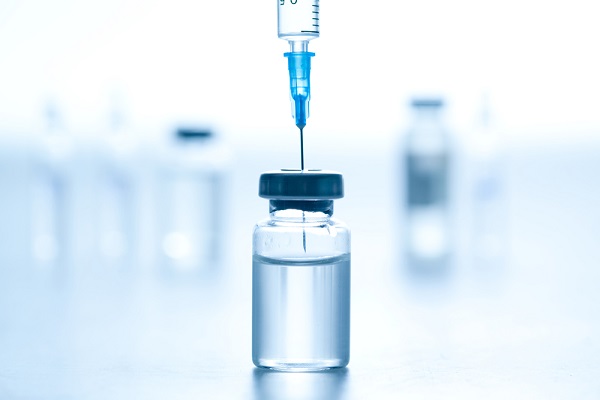8 Tips to Help Life Science Businesses Prevent Product Shortages

By: Brad John and Marcos Perez
Over the last few years, businesses have learned difficult lessons about the effects of supply-chain weaknesses and the importance of solving them. The COVID-19 pandemic is just one example of the types of supply chain disruptions that life science companies face.
Most life science companies gauge production needs based on historical trends. However, an unexpected surge in demand can challenge their ability to respond. For example, a pandemic or a rising demand for materials can result in a bigger need for medical supplies. Other factors that lead to shortages include transportation delays and labor shortages.
There are many job fields also competing for the same materials. Smartphone manufacturers are competing for the same tech-based resources as healthcare organizations, which leads to paying top dollar for lifesaving devices. In addition, many of the materials used in U.S. medication are outsourced from other countries. Relying on other countries can be a risk, as there can be delays that might have downstream effects.
As life science businesses prepare for another flu season, and as COVID-19 cases increase, now is the time to encourage clients to take measures against product shortages. Here are eight tips for life science business risk mitigation:
1) Be aware of reporting and notification requirements. The Federal Drug Administration (FDA) requires manufacturers to give notice of shortages and discontinuations of drugs that are life-supporting, life-sustaining or intended for use in the prevention or treatment of a debilitating disease or condition. The Coronavirus Aid, Relief and Economic Security (CARES) Act, which passed in March 2020, expands this requirement to include drugs, active pharmaceutical ingredients and medical devices that are deemed critical during a public health emergency.
The FDA requires notice of a shortage six months in advance, or as soon as practicable. Drug makers must also report annually on the quantity of products they make for commercial distribution. Companies failing to meet these requirements receive a noncompliance letter from the FDA. The letter is also posted on the FDA’s website.
2) Use manufacturing quality data in supplier purchase decisions. Suppliers are an important part of a business’ success. However, they can also pose a risk if they do not do their part to uphold standards of quality and customer service. That is why thoroughly examining a supplier before starting a relationship is important. Companies that do their due diligence with suppliers are more prepared for a stronger defense against claimants alleging damages.
As part of the process, it is important to review the FDA databases to get different information, such as observational inspections, regulatory infractions and other red flag issues that may show underperformance.
Companies should also invest in their own audits for a more in-depth look into the supplier’s operation. The audit can look at a supplier’s policies and procedures, certifications, contingency plans and performance metrics such as response times and product quality.
3) Take stock of the supply chain. Ongoing supply chain management is essential to help life science companies stay responsive. This means continuously monitoring each moving part of the supply chain. Companies should look at the sourcing of raw materials through customer delivery and make improvements and refinements when necessary.
Life sciences companies can use two methods to assess their supply chains. One approach is value stream mapping, which involves creating a detailed visualization of the entire lifecycle of a product or service. This visualization reveals where value is created and where it isn’t so that businesses can see where they need to take steps to fix bottlenecks and cut wasteful steps.
Another technique is active market forecasting, which helps companies plan their inventory in advance. It is a method that provides an accurate assessment of future demand and predicts the peaks and valleys in a product’s demand cycle based on historical data.
4) Review suppliers. Value stream mapping also lets companies know the flow of work through their entire supply chain to be sure suppliers consistently meet their production and delivery standards.
Reviewing suppliers can help companies avoid potential issues with production. When businesses review suppliers, they can look at their value stream map to verify performance, as well as contingency plans to make sure they can meet product demand if an issue comes up. Then, based on their findings, companies could negotiate solutions to improve product and delivery quality and end any unofficial supply channels that might put the quality of the product at risk.
In addition, it would be prudent for life science companies to double-check transit security if they manufacture pharmaceutical products. Unfortunately, this is a prime time for drugs to be diverted or replaced with adulterated or counterfeit products.
5) Have a documented protocol for Right to Try and Expanded Access. The Right to Try Act and the Expanded Access Program (EAP) can be a significant benefit to patients. They give extremely ill patients access to experimental drugs outside of a clinical trial. However, they can also present certain risks to life science companies such as delays in a wide distribution if they must provide drugs to individual patients. In addition, if demand exceeds supply, a company may have to deny access to patients who expect to get the drug.
These risks could lead to discrimination lawsuits and public backlash. To avoid this, companies should develop and document policies for participating in both programs, and make sure to follow this plan consistently. Doing so can offer some protection if any issues arise.
6) Identify and manage risk. Mitigating the risk of a product shortage can be complex, but a risk engineering consultant can help. These specialists identify gaps before an incident even occurs and they work with businesses to develop unique risk management plans that focus on high frequency exposures such as control items for sterile operations. The plan would also assist with risk transfer contracts, which are recommended for all supplier relationships.
7) Get the right insurance coverages. Companies can do everything correctly and still experience a product shortage. While they may think they are protected with traditional product liability insurance, that is not typically the case.
Product liability insurance helps cover claims of bodily injury resulting from use of or exposure to an insured product. It typically does not help with injury resulting from the absence or unavailability of the product. That’s why product shortage liability insurance is essential. It is a specialized coverage that helps cover bodily injury claims due to a shortage.
Companies also face the risk of a lawsuit when it comes to the Right to Try program. An ideal coverage helps protect companies if someone files a lawsuit about their decision to provide, or not provide, access to an experimental drug.
8) Connect with an experienced carrier. Agents should pair their life science clients with coverage from an experienced insurance company in the niche. Carrier specialists in risk solutions for the pharmaceutical industry and medical profession know the unique challenges that come with manufacturing and distributing medications and vaccines. The insurer can help companies prepare for and respond to product shortages through specialized coverage solutions and innovative risk engineering.
Brad John is life sciences industry practice lead at The Hartford. Marcos Perez is life science portfolio manager, international casualty team at The Hartford.
The information provided in these materials is intended to be general and advisory in nature. It shall not be considered legal advice. The Hartford does not warrant that the implementation of any view or recommendation contained herein will: (i) result in the elimination of any unsafe conditions at your business locations or with respect to your business operations; or (ii) be an appropriate legal or business practice. The Hartford assumes no responsibility for the control or correction of hazards or legal compliance with respect to your business practices, and the views and recommendations contained herein shall not constitute our undertaking, on your behalf or for the benefit of others, to determine or warrant that your business premises, locations or operations are safe or healthful, or are in compliance with any law, rule or regulation. Readers seeking to resolve specific safety, legal or business issues or concerns related to the information provided in these materials should consult their safety consultant, attorney or business advisors. All information and representations herein are as of August 2023.
The Hartford Financial Services Group, Inc., (NYSE: HIG) operates through its subsidiaries, including the underwriting company Hartford Fire insurance Company, under the brand name, The Hartford®, and is headquartered in Hartford, CT. For additional details, please read The Hartford’s legal notice at www.thehartford.com.










